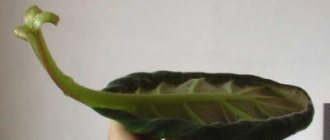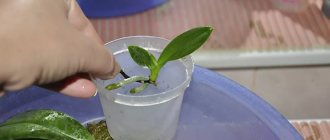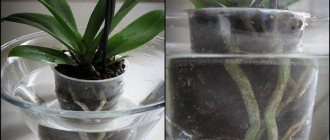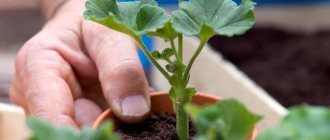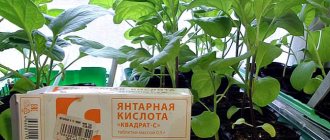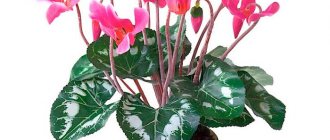Plants » Flowers
0
421
Article rating
Kira Stoletova
Transplanting indoor hydrangea is a necessary condition for the normal development of a home flower. More often, the procedure is carried out when there is insufficient space for the growing root system and depletion of the soil. Sometimes - due to disease or pests.
Transplanting indoor hydrangea
Choosing the right hydrangea in the store
You can buy hydrangea at the market, but it is safer to buy it in a store that specializes in selling flowers.
First, the flower in the pot is inspected, starting from the stem. A healthy plant's stem has a rich green color and should be strong and elastic. The leaves should also have a bright green color and be succulent, without any spots or brown formations.
You should not purchase a plant with any deviations in the form of white or yellow spots, with limp leaves or dry fringe along the edges of the leaves. Such a plant will not please your household after purchase, growing at home - it will quickly die. It is important to know how to properly care for hydrangea so that the bush blooms luxuriantly and turns green.
We carefully examine the balls of inflorescences of a flowering plant. The cap has a dense covering of bright buds. If a flower lacks nutrients, the inflorescences are pale in color and fall off when touched.
Note!
When purchasing any flower, it must have a healthy appearance, bright and rich color.
How to replant?
How to do it, step by step:
Place a pot with a plant on a sheet of polyethylene or on a newspaper, which is carefully taken by hand by its base, tilt the pot, take out the hydrangea with a lump of earth (if necessary, use a knife to separate it from the walls of the pot), pour a three-centimeter layer of drainage into the new pot, carefully lower the flower into new pot and sprinkle it with new soil mixture.
ATTENTION: the plant cannot be covered with soil to a greater height than before, otherwise the stem may begin to rot. The transplanted hydrangea is sprayed with water, and full watering is done the very next day after transplantation.
The transplanted hydrangea is sprayed with water, and full watering is done the very next day after transplantation.
How often does a flower need replanting?
The first transplant is often forced, immediately after purchase in a store, where the plant could be infected with mealybugs. If you have such concerns, replant the hydrangea in a new pot filled with new soil, and before that, take a good look at the roots of the plant to make sure that everything is in order with the flower.
As planned, hydrangeas are replanted every year, changing the soil, which most likely has time to become depleted, which means it will not give the plant a chance to fully bloom. When transplanting, do not forget about drainage.
Transplantation and care after purchase
Any flower, including hydrangea, cannot be replanted immediately after purchase. It must adapt to new conditions, growing in a pot on the windowsill, this will take from 2 to 4 weeks. Subsequently, one should not forget about regular transplants; at home, they should be carried out at intervals of 3 years. Only proper care of hydrangea will give abundant flowering and a lush crown of the bush.
Hydrangea is able to please its owner with chic and lush flowering, provided that the pot for it is voluminous, because the roots love space and grow in breadth. Therefore, you need to ensure that the size of the plant matches the volume of the container.
May be interesting Scindapsus: growing, care and propagation at home Why do the roots of the phalaenopsis orchid rot and what to do Flowers in the house - to joy or to loss? Signs and foreign
When replanting, the pot should not be much larger than the previous one. You can buy ready-made soil “for hydrangeas,” or you can prepare the mixture yourself. To do this, take sand, leaf and turf soil in a ratio of 1:3:3.
The pot for hydrangea is not deep, but wide, since its roots grow wide. If you take a container that is too large, the plant may not bloom for a long time.
To preserve the root system, the bush is simply transferred to another pot when transplanted into another pot. This protects the flower from stress.
A thick layer of drainage is poured onto the bottom of the pot. On him –
a small layer of prepared earthen mixture. Then we dump the hydrangea out of the pot along with the lump, which is placed in a new container. All empty spaces in the pot are filled with earthen mixture, but the neck of the plant should not be buried.
Immediately after transplanting, the hydrangea is watered abundantly so that the moisture does not evaporate quickly, and the soil surface is mulched with peat.
Transplantation into open ground
In the 3rd year after sowing the seeds, the hydrangea is moved to a permanent place. Time depends on region:
- in the south - the beginning of autumn, when the heat subsides;
- in the middle zone - spring or late summer;
- cool areas - the beginning of the season, after the soil warms up to 15 ° C.
Such planting dates ensure the best survival rate. The operation is the same as for an adult hydrangea:
- Dig a hole in advance with a depth of at least 40 cm and a diameter of 60 cm.
- Prepare a fertile mixture of acidic peat, coniferous soil, sand and humus (2:2:1:1).
- Fill the hole and water it with acidified water (1 teaspoon of citric acid per bucket).
- When the time comes for planting, part of the substrate is taken out of the hole.
- Place a seedling in the center. The root collar should be a few cm below the edge.
- Cover with substrate and compress.
- Water with rooting agent. Each pit requires at least 20 liters of water.
- Mulch with bark, acidic peat or pine litter.
- Cover the hydrangea with a box or bucket with a hole in the bottom.
Hydrangeas grown from seeds in open ground are transplanted to a permanent location in the same way. Here, the owners should try to dig out as large a ball of earth as possible and, together with it, move the bush to the planting site.
Caring for hydrangea at home
Lighting
Hydrangea loves plenty of light, but direct sunlight can damage the delicate leaves and leave burns on them. With the right location, the bush will bloom long and profusely, delighting you with its bright fluffy balls. To do this, the hydrangea pot should be placed in a bright place where the sun's rays will not hit the plant. Ideally, this place is 3 meters from the window.
Temperature
Hydrangea is quite picky with temperature. Ideal conditions for it would be a temperature in the range of 18 –
23 °C.
Drafts for hydrangea are not only undesirable, they are detrimental to the flower, it can die. In order for the bush to bloom abundantly in summer, in winter it should be allowed to rest and gain strength. To do this, the plant is placed in a room with a temperature of about 10 °C.
When is it better to replant hydrangea: in spring or autumn, is it possible in summer?
Hydrangeas are quite demanding, so when transplanting them to another area, you should follow agronomic recommendations so that the bushes take root well and bloom profusely in the future. The best time of year for planting this perennial crop is early spring (from March to April inclusive), since there are long summers and autumns ahead, which means that the plants will have time to acclimatize after the procedure before severe frosts arrive.
It is also permissible to plant shrubs in the fall ( from the second half of September to the end of October), but in this case the gardener needs to protect them well from the cold, since even frost-resistant species may not survive the first winter.
Features of transplanting indoor hydrangea
For annual and abundant flowering, it is necessary to ensure proper care of the hydrangea after purchase. The bush at home should be replanted every year in a different pot. To prepare the soil for replanting, take 1 part sand, 3 parts turf and 3 parts leaf soil. Mix everything, distributing all components evenly.
Cover the bottom of the pot with a thick layer of expanded clay as drainage. Sprinkle the expanded clay with a layer of the prepared mixture, slightly pressing it down. Carefully remove the prepared flower from the pot along with the earthen lump and place it in a new pot. We fill the trunk with fresh earthen mixture, leaving the neck of the plant uncovered.
Important!
After transplanting, the flower must be watered and the surface of the soil covered with mulch, then the moisture will not evaporate quickly.
Hydrangea propagation
The plant can be propagated in various ways: using seeds (rarely used), cuttings or dividing the bush.
By cuttings
The optimal time for work is January, February. Next autumn a bush of 3-4 stems will form. If rooting is carried out in March, the bush will be single-stemmed. For cuttings, root shoots 7-8 cm long with internodes (up to 3 pieces) are suitable.
Carrying out work:
- The lower part of the cutting is treated with a means to stimulate root growth.
- Planted in a sand-peat mixture.
- Place in a warm, well-lit place with sufficient humidity. You can cover the top with a jar or cellophane.
- Ventilate daily and monitor soil moisture.
Roots will appear in 20-30 days. After which the plant can be transplanted into a pot.
Dividing the bush
The process is simple and fast. It is important to act carefully. Work algorithm:
- When replanting in spring, divide the bush into several parts, each of them should have a growing point and developed roots.
- Shorten stems and roots.
- Plant in containers, cover with soil, then with a layer of peat.
If you divide the bush in the spring, the parts will already take root in the fall.
Watering and fertilizing hydrangeas
Hydrangea loves abundant watering, but to prevent the root system from rotting, irrigation should be carried out when the top layer of the substrate dries. When flowering and during the period of active growth, hydrangea needs abundant and frequent watering.
During the dormant period, the intensity of watering is reduced, and in winter, the earthen ball should not dry out, but abundant watering is not needed.
In the spring, as soon as green leaves begin to appear on the branches of the plant, watering is resumed.
Water for irrigation should be soft and at room temperature. You cannot water the plant with tap water; it must settle.
Hydrangea is fertilized only in summer with mineral fertilizers twice a week. The irrigation solution includes potassium sulfate 30 g, superphosphate 40 g, ammonium nitrate 30 g per bucket of water.
On a note!
Feeding is done all summer, until mid-August. This is the time of flower bud formation. All weak branches are removed, as well as root shoots.
Care
When grown indoors, indoor hydrangea requires almost the same care as growing in open ground.
Watering
If the leaves of an indoor flower begin to dry out and turn brown, these are the first signs of lack of watering.
How to properly replant hydrangea in a pot
Hydrangea requires plenty of moisture. It should be watered regularly as the surface layer of the substrate dries.
Use filtered water, warm, at room temperature. In order to maintain lush flowering, add lemon juice - about 5 drops per liter. The presence of lime in water leads to chlorosis of the foliage.
In summer, in addition to watering, leaf spraying is carried out. In autumn, the regularity of watering procedures is reduced, and in winter it is reduced to a minimum. And in the spring, when fresh leaves appear on the plant, the regime is restored.
Feeding
Homemade hydrangea is fed throughout the growing season.
- Primary - after awakening from a state of rest (approximately in February). Fertilizer complexes with a high nitrogen content are used. This will help activate the growth of shoots and increase green mass.
- In spring, the plant requires potassium and phosphorus to produce a large number of buds.
- In summer, nutrition is applied three times - at the formation of flower ovaries, at the beginning of the budding process and at the stage of active flowering for the blossoming of inflorescences. At the beginning of the season, nitrogen fertilizers are needed, and towards the end they increase the proportion of potassium and phosphorus; more often they use a mixture of potassium sulfate (15 g) and superphosphate (20 g), diluted with water (5 l);
- In autumn, for the purpose of future planting of flower stalks and shoots, potassium and phosphorus are used in the form of compost, peat and humus or ready-made nutritional complexes.
The interval between feedings is once every 2 weeks. The method used is root irrigation.
Trimming
To form a beautiful bush shape, pruning is necessary. A pruner or sharp knife is suitable for this.
Cuts should be made even and smooth. During pruning, it is necessary to remove all dry, diseased, damaged branches and leaves. To form a lush crown, the top is trimmed evenly and evenly. It is advisable to shorten the shoots in spring and autumn. During the flowering period, pruning is not recommended. It can be renewed when the first flowering branches appear. They should be removed immediately so that they do not begin to rot.
Growing from seeds
This propagation method cannot be called simple and is suitable for experienced gardeners. To grow hydrangea at home in a pot from seeds, prepare a suitable substrate. To do this, mix turf soil, humus and leaf soil in equal parts. Add half a part of peat and sand to this mixture.
Start sowing at the end of winter. Pour the substrate into a suitable bowl and distribute the seeds evenly over the surface without embedding them in the soil. Sprinkle the soil with warm water and cover the planting with glass. Place the greenhouse in a warm and bright place. To ensure that the seeds germinate, keep the substrate moist.
When shoots appear, remove the glass. When two true leaves appear on the seedlings, plant them in deeper containers filled with soil of the same composition. When the plants are strong enough, transplant them into individual pots with a diameter of 7 cm.
When to replant hydrangea: recommended timing
Mature hydrangea bushes, like other perennial garden crops, get used to the constant composition of the soil and climate.
A transplant carried out at the wrong time is fraught with negative consequences - it will be difficult for the plant to adapt to another place, flowering will occur later and will not be as abundant as usual.
Important : young hydrangeas that have not reached 5 years of age are the easiest to transplant. In adult bushes, adaptation is more difficult.
The ideal time for replanting is considered to be autumn, since in this case the hydrangea will definitely bloom with the onset of spring. The signal for work will be the end of the budding period, which begins around mid-September.
What to do with a potted hydrangea in the fall
Before planting, you need to remove all the foliage it has thrown out from the seedling, trim off all weak shoots and then lower it into a trench. The bush should be slightly inclined in the ground, but the roots should be lower than the rest of it.
After filling the bush, it is advisable to level the ground from above. Then spread the cut shoots around and also sprinkle them with peat. Humus, scattered in a thin layer, is needed on top so that the seedling can survive frosts.
When the sun warms the ground, the buds of the buried bush will begin to grow. They will not feed from the common root for long and will soon form their own roots. Before the onset of autumn, the bush must be dug up and new shoots separated. This budget-friendly propagation method is suitable for gardeners with any experience in gardening.
Autumn planting is the twin of spring planting, although nutrition should only be added to the ground once. This is done in September and a mixture of potassium and phosphate is used. Those plant varieties that are not afraid of the cold will perfectly withstand transplantation into soil prepared in advance. Due to the approaching cold weather, transplantation time is limited to the first two weeks of September.
When replanting a plant, its branches must be tied with twine. If the old roots are damaged during digging, this will not affect the flowering of the hydrangea.
Autumn pruning is justified by the fact that the plant does not bleed much juice from the cut sites. It is usually carried out in the second month of autumn and plays an important role in giving shape to the plant.
If shoots that are more than one year old are covered with flowers, then pruning is needed to decorate the bush and save it from disease. Diseased, broken and dried branches are removed. If one-year-old babies bloom, then competing shoots are also removed.
Hydrangea paniculata is pruned like a tree, without shortening the skeletal branches. Tree-like trees begin to be cut when they reach four years of age. Cuttings are not propagated in the fall, but other methods are still relevant.
